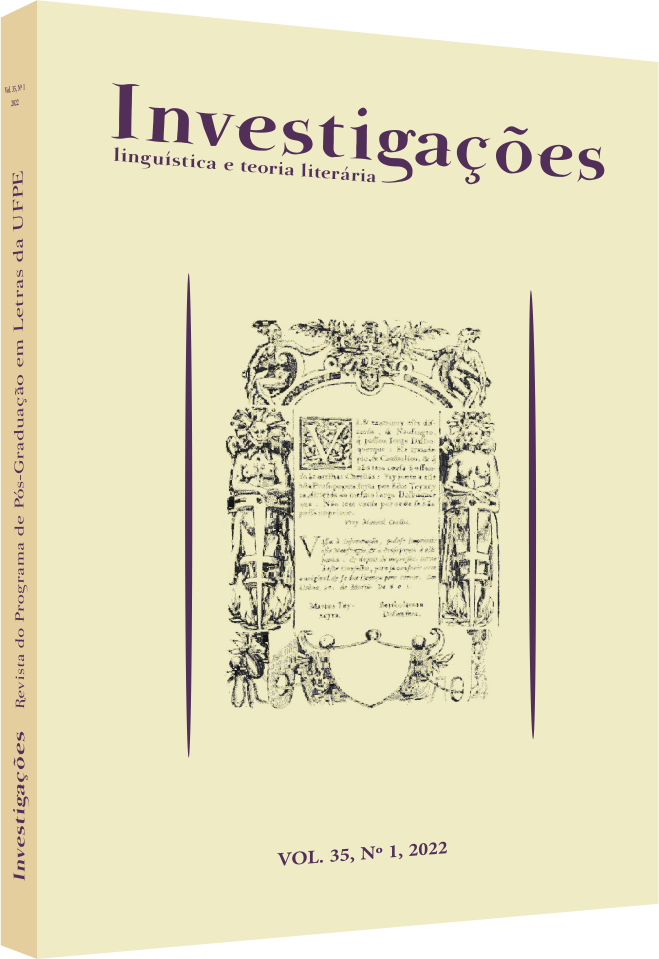Entre o valor heróico de Enéias e a fundação da identidade romana: o conceito da virtus e da pietas heróica a partir dos livros I, II e III da Eneida de Virgílio
DOI:
https://doi.org/10.51359/2175-294x.2022.254189Keywords:
Areté, Aeneas, hero, Rome, virtus.Abstract
The object of this study is Virgil's Aeneid, an apologetic work to the greatness of Rome. Developing an investigation about the Roman concepts of virtus and pietas in the figure of the hero Aeneas and in the light of the Greek conception of areté, we seek to understand the relationship between these concepts through philological, literary and cultural analyses. In the conclusive horizon of the study, we highlight what remains and what changes between them in the historical contexts to which they belong and how their changes and permanence (re)configured the identity of Rome, a direct descendant of the Greek cultural spirit, both mythically and historically.References
COULANGES, Fustel de. A cidade antiga. Trad. de Jean Melville. São Paulo: Martin Claret, 2008.
JAEGER, Werner Wilhelm. Paidéia: a formação do homem grego. 4. ed. Trad. Artur M. Parreira. São Paulo: Martins Fontes, 2001.
MOTA, Myriam Becho; BRAICK, Patrícia Ramos. História: das cavernas ao terceiro milênio.1. ed. São Paulo: Moderna, 1997.
PEREIRA, Maria Helena da Rocha. Estudos de História da Cultura Romana.Lisboa: CalousteGulbenkian, 2002.
SARAIVA, F. R. dos Santos. Novíssimo Dicionário latino-português.12 ed. Belo Horizonte/Rio de Janeiro: Garnier, 2006.
SPALDING, Tassilo Orpheu. Dicionário de mitologia latina. Belo Horizonte: Itatiaia, 2004.
VASCONCELLOS, Paulo Sérgio de. Épica I: Ênio e Virgílio. Campinas, SP: Ed. Unicamp, 2014.
VIRGÍLIO. Eneida. 9. ed. Trad. TassiloOrpheu Spalding. São Paulo: Cultrix, 2002.
Downloads
Published
How to Cite
Issue
Section
License
Copyright (c) 2022 Emmanoel de Almeida Rufino

This work is licensed under a Creative Commons Attribution 4.0 International License.
Authors who publish with Revista Investigações agree to the following terms:
Authors retain copyright and grant the journal right of first publication with the work simultaneously licensed under the Creative Commons Attribution 4.0 International (CC BY 4.0) license that allows others to share the work with an acknowledgement of the work's authorship and initial publication in this journal.
Authors are able to enter into separate, additional contractual arrangements for the non-exclusive distribution of the journal's published version of the work (e.g., post it to an institutional repository or publish it in a book), with an acknowledgement of its initial publication in this journal.
You are free to:
Share — copy and redistribute the material in any medium or format for any purpose, even commercially.
Adapt — remix, transform, and build upon the material for any purpose, even commercially.
The licensor cannot revoke these freedoms as long as you follow the license terms.
Under the following terms:
Attribution — You must give appropriate credit , provide a link to the license, and indicate if changes were made . You may do so in any reasonable manner, but not in any way that suggests the licensor endorses you or your use.
No additional restrictions — You may not apply legal terms or technological measures that legally restrict others from doing anything the license permits.

